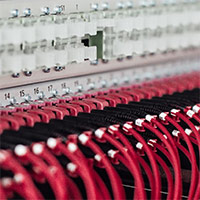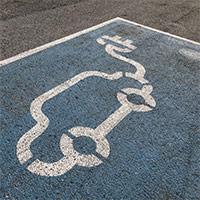Over two decades, we’ve been fortunate to participate in some groundbreaking innovations. Few, if any, have brought the sea change promised by electrification. The calls to action have gotten louder and more persistent: It’s go time. So, do you dive head-first into all-electric power management (3, 2, 1, jump!) or is there a less risky option?
“Fortune favors the bold,” the saying goes. There’s a lot of truth to that maxim when we’re talking about entrepreneurship. After all, Ford wouldn’t be Ford if they’d stopped at a faster horse. But in defense, public safety, and other critical operating spheres (where property and lives are on the line), a more measured approach is required.
Think about 1) Your daily and emergency power needs, 2) The charge time of an all-electric system and charge availability on deployment, and 3) The state of the power grid itself. Then…
Consider this: Hybridization may be the ideal “bridge” solution.
 1) Your Power Needs and Space Constraints
1) Your Power Needs and Space Constraints
Between IT, audio/video, HVAC, comms, and vehicle systems, mobile operations centers draw a lot of juice. More juice equals more batteries, and batteries need space. Will you run power-hungry mechanical or hydraulic systems? The added weight and physical space might make all-electric power management unrealistic.
 2) Charge Time and Availability
2) Charge Time and Availability
As of this writing, even fast-charging passenger EV’s connected to high-output stations measure full recharges in hours. This may not be an issue… Until you’re faced with an extended deployment. Likewise, if your local charging infrastructure is robust, an all-electric solution might seem attractive. But always consider the possibility of “outlier” missions and a compromised or inaccessible grid.
 3) About That Grid
3) About That Grid
The American power grid is aging, and probably more fragile than we’d like to admit. “Creaky” is the word Reuters uses. As environmental and human factors — even the rise of electric vehicles themselves — put more stress on the system, don’t count on plugging in without problems. Simply put, the grid needs to catch up to our electrification drive.
Enter Hybridized Power Management
What if you could bring the greatest benefits of electrification to your mobile operations, but reduce the risks? A hybridized solution (as delivered by NeverDown Power Management™) saves fuel, cuts carbon emissions, and runs quiet and clean.
NeverDown seamlessly switches between battery and engine-driven generator power. An intelligent Battery Management System (BMS), keeps cells topped off with a mix of generator and optional, supplemental solar power. Systems can be configured for nearly any mission requirements, and are controlled effortlessly by Nomad Total Command (NTC) vehicle management software. Download the Information Sheet
Hybridized power management can serve demanding energy needs and eliminate concerns about charge time. It also enables operation when the grid is inaccessible, limited, or down… Precisely the scenarios in which grid power must be reserved for response and restoration efforts. In fact, a NeverDown-equipped asset could actually charge all-electric vehicles in need. Why draw on the operating environment when you can give back to it?
Moving Forward
 This is not some curmudgeonly anti-electrification blog (stay off our lawn!). To the contrary, our Innovative Solutions Group (ISG) is in the lab every day, partnering with defense, telecom, and public safety customers on power management solutions for the next 20 years.
This is not some curmudgeonly anti-electrification blog (stay off our lawn!). To the contrary, our Innovative Solutions Group (ISG) is in the lab every day, partnering with defense, telecom, and public safety customers on power management solutions for the next 20 years.
What we’re suggesting is a solution that serves effectively today, and is flexible enough to grow as infrastructure catches up to appetite.
Your organization might take a similar tack. Consider adopting hybridization now, while also devoting some resources to investigating and testing the all-electric ecosystem.
We want to know!
What’s your plan for mobile asset electrification? How can Nomad help?


